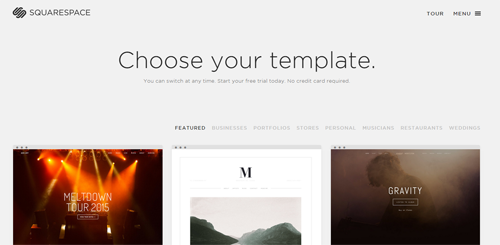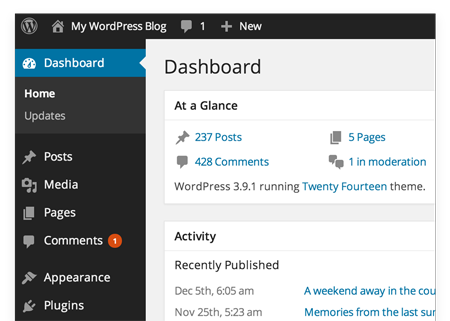DIY vs. DIFM - Which is Better for SMBs?

By Gil Ilani, Camilyo
Building a website is like building a house, in that there is a whole spectrum of options for how involved you want to be in its construction. On one end, you've got the Do-It-Yourself (DIY) approach, where you take design, development and management into your own hands. On the other end, there is the Do-It-For-Me (DIFM) approach, where you can buy full-service, soup-to-nuts Web packages that include branding, site design, implementation, hosting and content updates and more.
The reality is that most SMB owners don't have the technical expertise or resources to build a website from scratch on their own. Establishing a strong Web presence has never been more important in today's business world, and these DIY and DIFM solutions exist to help SMBs take advantage of the opportunities the Internet offers. There are options to suit to every businesses's unique desires and needs. Ultimately the "right" approach depends on available skill sets and resources, budget and your ability to maintain the site post-launch.
Let's take a look at the various approaches, and their advantages and disadvantages.
The Full-DIY Approach
For small businesses with a restricted budget, full-DIY can be a tempting option. This approach involves the lowest upfront costs and gives businesses full control over how much they spend and when. You can find a number of free or freemium cloud services online that help DIYers build and manage their own website. For example, Wix, SquareSpace and Weebly provide complete out-of-the-box solutions that enable you to create and host a website for a flat monthly fee.

Using these platforms, customers select functionality, styles and design elements from a series of options. Since these selections have been pre-built, no technical skill is required from the customer. The low technical barrier to entry is a significant benefit for business owners that have no tech skill or know-how. That said, what you gain in ease, you lose in flexibility down the road. These platforms limit your ability to customize or scale later on, and you are prone to vendor "lock-in" since their solutions are built on proprietary systems.
Content Management System (CMS)
Another option is to install an open-source content management system (CMS). These solutions give users a turnkey website that can be set up and managed through a CMS interface. Popular packages include WordPress, Joomla and Drupal-- each with an expansive selection of templates and plugins that enable you to customize your own website. These options have minimal recurring costs, but are only available to people with previous experience working with CMS, and they can be expensive in terms of how much time is required to become proficient.

Going DIY with an open-source CMS solution leaves Web development and design completely in the hands of the customer. However, customers without technical expertise may need assistance to accomplish more intermediate tasks.
DIY options, whether its a website builder or CMS, may be cheaper, but they often leave customers with sub-par results. The site's user experience is generic, the Web design lacks sophistication, and/or desired functionalities are limited. Just as using Adobe Photoshop does not make you a good graphic designer, using a DIY sitebuilder -- even a good one -- will often lead to less-than-professional results. Sometimes it is better to put the whole site into a professional's hands, and focus on the day-to-day operations of your business.
DIFM Offerings
DIFM is great for small businesses with no time or inclination to handle their Web presence full-time. This approach involves hiring a professional online service provider to design and develop the Web assets, select a Web host and configure/deploy the site. A matrix of different options exists within the DIFM arena, and what you get depends on the firm rendering the service.
DIFM is generally a more costly approach, but gives small business customers a Web solution that immediately performs well. It is especially effective when you work with a Web solutions provider that integrates marketing and transaction capture capabilities, such social media marketing, SEO/SEM, video and ecommerce into its Web development package. That way all your online business needs are satisfied in one place, which saves time, money and worry. Finally, the DIFM approach provides small businesses with greater confidence, because they know that their Web presence is functional and can deliver the anticipated results.
Getting an effective Web presence up and running -- with Web design/development, site management/optimization, and Web marketing -- is a multidisciplinary endeavor that most small businesses are not equipped to accomplish on their own. Furthermore, achieving optimal results with a Web presence requires far more than just building a site. You have to think about mobile accessibility, social media, SEO/SEM and more.
Small business owners who don't operate in the tech world may not even know what options exist for their website, let alone which options are best for them. Competent Web and digital agencies will be well-versed in the latest Web marketing practices, as well as contemporary development methodologies such as responsive design and mobile optimization. Hiring an agency means you can stay ahead of the tech curve without even trying, and take advantage of technologies you didn't even know existed. And the best agencies will work hand-in-hand with you to determine what initiatives are appropriate for you business objectives, schedule, technical competence and budgetary constraints. The larger investment in your website will quickly begin to pay off.
Gil Ilani is the CEO of Camilyo, an all-in-one online marketing platform for agencies and directory providers that serve the SMB market.

Subscribe to Our Newsletter!
Latest in Marketing









